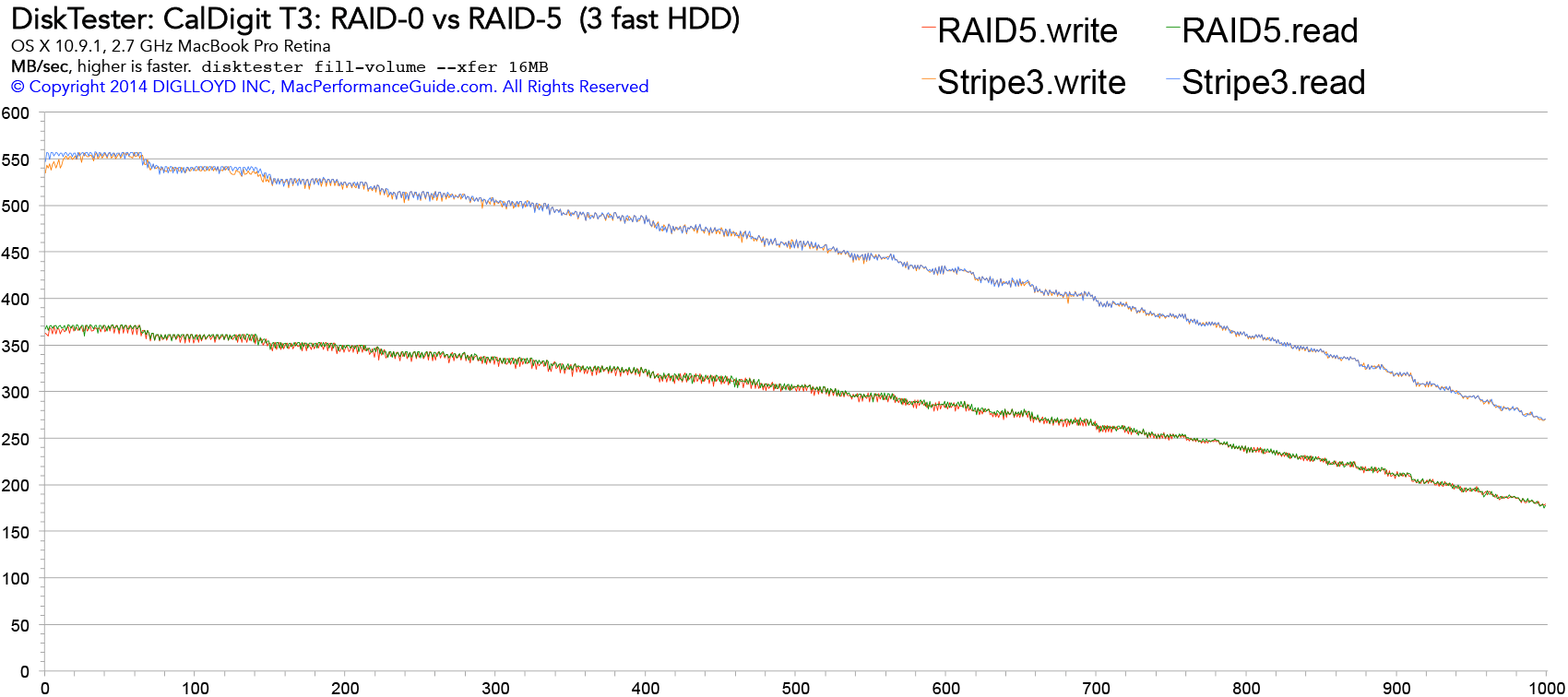
$220 SAVE $130 = 37.0% Western Digital 16.0TB Western Digital Ultrastar DC HC550 3.5-in… in Storage: Hard Drives
|

|

|

|

|

|

|

|

|

|
CalDigit T3: 3-HDD RAID-5 vs RAID-0
Related: hard drive, RAID, RAID-0, RAID-5, storage, Thunderbolt, weather events
Performance with RAID-0 striping should run at the speed of the drives installed, or very close to it: three drives striped should run nearly 3X faster than one drive.
A RAID-5 (“striping with parity”) uses the capacity of drive for parity information (could be distributed among drives or dedicated to one drive). Hence, the best speed that can be expected of an 3-drive RAID-5 is 2X that of a single drive.
When a drive fails in a RAID-0, the volume is kaput. When a drive fails in a RAID-5, it degrades to a RAID-0. Hence one trades off some speed for fault tolerance.
Results
Tested with three fast Toshiba 7200 rpm DT01ACA200 series drives. Single-drive speed of the drives used is ~180MB/sec on the fast portion of the drives (left side of graph).
The RAID-5 volume was created using a beta version of SoftRAID 5.
The RAID-5 speed is about 2X the speed of a single drive and the RAID-0 speed is about 3X the speed of a single drive. Which is what one would expect.
The falloff over the capacity (left to right in graph) is an unavoidable function of hard drive speed across the capacity (it would not occur with SSDs).

Seagate 22TB IronWolf Pro 7200 rpm SATA III 3.5" Internal NAS HDD (CMR)
SAVE $100

 diglloydTools™
diglloydTools™

